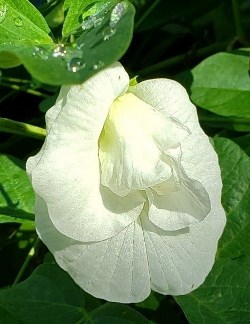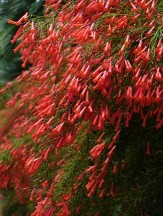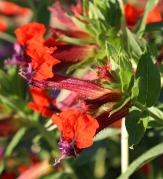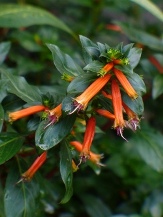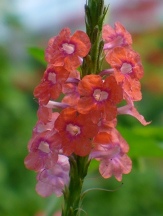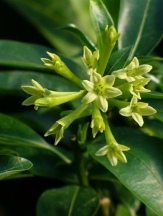Butterfly Nectar Sources
Attract loads of butterflies to your garden with our excellent selection of nectar producing butterfly plants. From Porterweed, Butterfly Bushes, Butterfly Weed, Lantana, Vitex, to Pentas as well as many other beautiful and free flowering nectar producing plants that are sure to bring these fluttering wonders into your garden from spring to fall.
White Pea Vine, White Clitoria Vine, Butterfly Pea Vine, Peavine
Clitoria ternatea 'Alba'
A rare or at least uncommon color form of the ever popular Blue Pea Vine producing large white blossoms held against medium green to blue green foliage on a small vine with excellent flower power. The White Pea Vine makes the perfect vine for container culture on small trellises, mailboxes, and fences that will flower from spring nearly all the way until frost. By some accounts it is a tender perennial in mild winters but is more generally grown as an annual and it readily returns from seeds saved the previous winter. Provide a full to partial sun location in a moderately fertile soil for optimum vigor and flowering. Caterpillar host: Longtail Skipper. Item# 11952
US$14.99
Or
Quantity Exceeds Stock Level
Email Me When Ready
White Pea Vine, White Clitoria Vine, Butterfly Pea Vine, Peavine
Clitoria ternatea 'Alba'
Mini Cart
Categories
- 2024 New Plants
- Agastache
- Angel Trumpets
- Bee Plants
- Bonsai Starter Plants
- Butterfly Plants...
- Camellia & Sasanqua Selector...
- Camellias & Sasanquas
- Cut Flowers
- Deer Resistant Plants
- Epiphyllums
- Figs, Figs, Figs...
- Fragrant Plants
- Fruits & Herbs
- Gardenias
- Gift Certificates
- Gingers
- Great Plant Picks for the Pacific Northwest
- Greg Grant Introductions
- Groundcovers
- Heirloom Plants
- Hibiscus...
- Honeysuckle
- Hoyas
- Hummingbird Plants
- Hydrangeas
- Indoor Plants
- Iris
- Lantanas
- Louisiana Native Plants
- Louisiana Super Plants
- Missouri Botanic Gardens Plants of Merit
- Moon Moth Garden Plants
- Native Plants
- Passionvines
- Perennials - All
- Perennials by Size Class...
- Phlox
- Plants by Flower Color...
- Plants by Foliage Color...
- Plants by Fruit Color...
- Plants for Bogs & Wet Areas
- Porterweeds
- RHS Award of Garden Merit® Plants
- Salt Tolerant Plants
- Salvias
- Shade Tolerant Plants
- Shrubs & Trees - All
- Shrubs by Size Class...
- Songbird Plants
- Succulents & Cacti
- Texas Superstar® Plants
- Top Performers from Mt. Cuba Center Trials
- Tropical Plants
- Turks Cap
- Vines and Vine-like Plants
Information
Top Sellers
We Securely Accept
![]()

